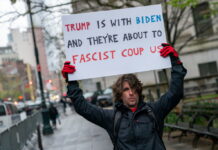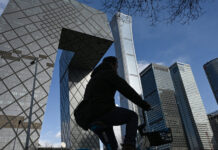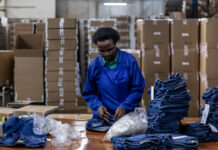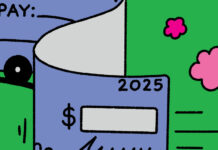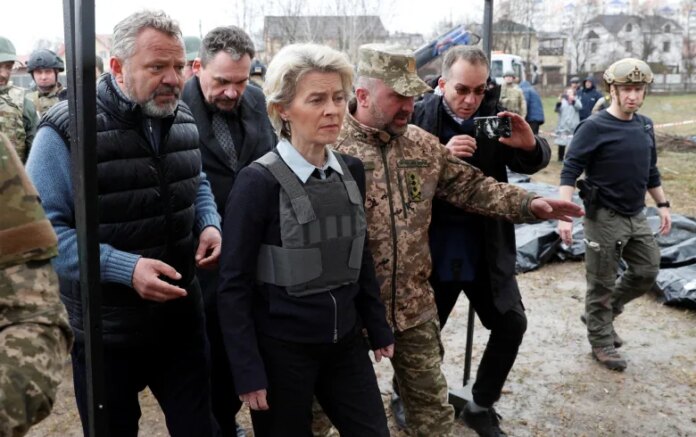In the month since Russia withdrew from northern Ukraine, the capital Kyiv has seen a crowd of high-profile visitors: 11 Prime Ministers, Austria’s Chancellor, the US Secretary of State and Defense, the Speaker of the House of Representatives, the UN Secretary-General – even Hollywood star Angelina Jolie .
Canada has not even sent a cabinet minister.
Ukraine noticed.
“If you see a friend, an ally…physically in the capital, it would mean a lot,” said Andriy Shevchenko, who until recently was Ukraine’s ambassador to Canada.
It’s not just about one visit.
Twenty-seven nations have reopened diplomatic posts in Kyiv – but the Canadian embassy in Kyiv remains locked and was vacated before the war began.
European Commission President Ursula von der Leyen walks with Bucha Mayor Anatolii Fedoruk April 8 during a visit to the city of Bucha outside Kyiv. UN Secretary-General Antonio Guterres visited Bucha, site of mass graves after the Russian invasion. (Valentyn Ogirenko/Reuters)
“Canada was one of the first countries to move the embassy. We don’t want Canada to be the last country to return,” Shevchenko said.
Foreign Minister Mélanie Joly said plans to reopen are in the works.
“We must ensure that the security situation on the ground allows for this,” her office said in a statement.
Others moved faster. Poland and Georgia never left. Italy and the Netherlands have reopened their mission, as has the UK.
Kyiv is “the right place,” the British ambassador told The Guardian newspaper.
With the largest Ukrainian diaspora outside of the former Soviet states, Canada has claimed to be one of Kiev’s biggest supporters, making the lack of a high-profile visit and open embassy all the more puzzling to some.
Prime Minister Justin Trudeau’s office did not directly respond to a question about a possible visit, but said in a statement that he and Ukrainian President Volodymyr Zelenskyy “remain in frequent contact with their Ukrainian counterparts, in addition to regular contacts across the federal government.” .
Why a visit is important
Many VIP visits to the Ukrainian capital include stops north of the city, where Russia left a trail of destruction on its broken northern front.
UN Secretary-General Antonio Guterres visited Bucha, site of mass graves, and Irpin, a leafy suburb outside the capital where half the buildings were destroyed in Russia’s first invasion.
MEDIA | UN Secretary-General tours Ukraine as fighting rages on: 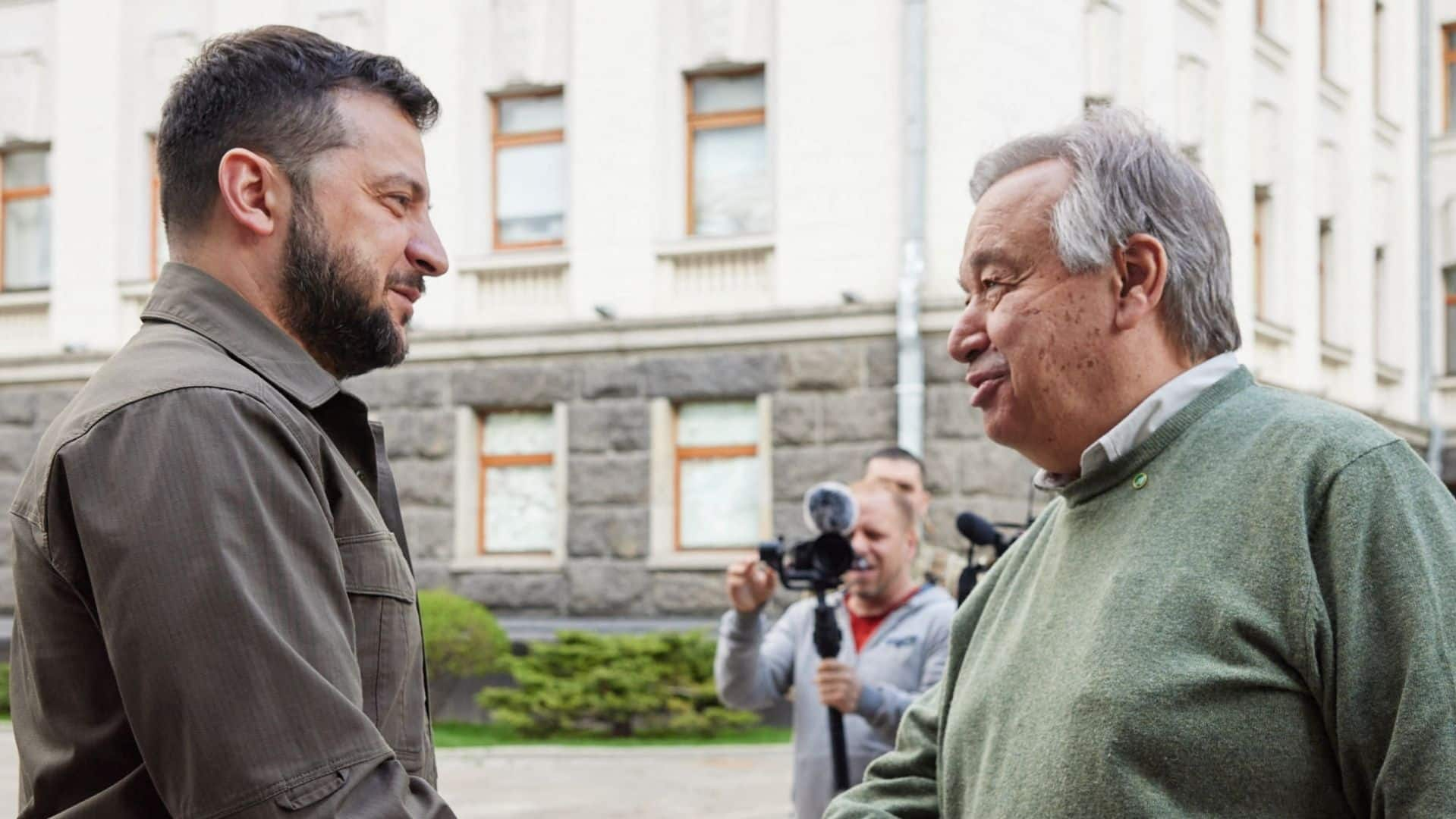
UN chief meets with Zelenskyy, inspects damage in Ukraine
UN Secretary-General António Guterres met with Ukrainian President Volodymyr Zelenskyy to discuss a plan to evacuate trapped civilians in Mariupol, shortly after witnessing firsthand the damage inflicted by Russian forces near Kyiv. 2:38
At a joint press conference concluding this visit, Zelenskyy said the leaders “must be here, and I am grateful to the Secretary-General for coming to Kyiv.”
Bulgarian Prime Minister Kiril Petkov visited the smoldering ruins of Irpin and told a CBC News crew it was imperative that world leaders pay a visit because “it’s very different when you’re in the comfort of your office.” make public statements. It’s very different to see it firsthand.”
Canada’s Contributions to Ukraine
Since the outbreak of the latest chapter in nearly a decade of conflict between Russia and Ukraine, the German government has pledged support. This process was pushed into high gear after the invasion in February.
However, some countries have been far more generous relative to the size of their economies.
Poland, for example, is approaching 1 percent of its total GDP in contributions to both financial and military support.
In a tracker created by Kiel University in Germany in late March, Canada did not make the top 12 donors.
Since then, Canada has pledged an additional $500 million in support.
The Biden administration has requested an additional $33 billion in aid to Ukraine, most of it for the purchase or transfer of military equipment.
American and Canadian soldiers are training Ukrainian soldiers – outside of Ukraine – to use sophisticated M777 howitzers, which have a range of 30 kilometers. When equipped with high-precision Excalibur shells, they are accurate to within 10 meters.
“We greatly appreciate the Canadian assistance, weapons and military training and financial support,” said former Ambassador Shevchenko.
Canada gave Ukraine four of these big guns. Australia, with a smaller population, offered six. The US transferred 90.
European nations have also bought or shipped military equipment from their own stocks, although they face a greater risk of Russian retaliation.
Many still depend on Russian gas to fuel their economies. Poland and Bulgaria were cut off last week. Others can follow. However, Canada is not dependent on Russian gas and its geographical location makes it less vulnerable to Russia’s orbit.

